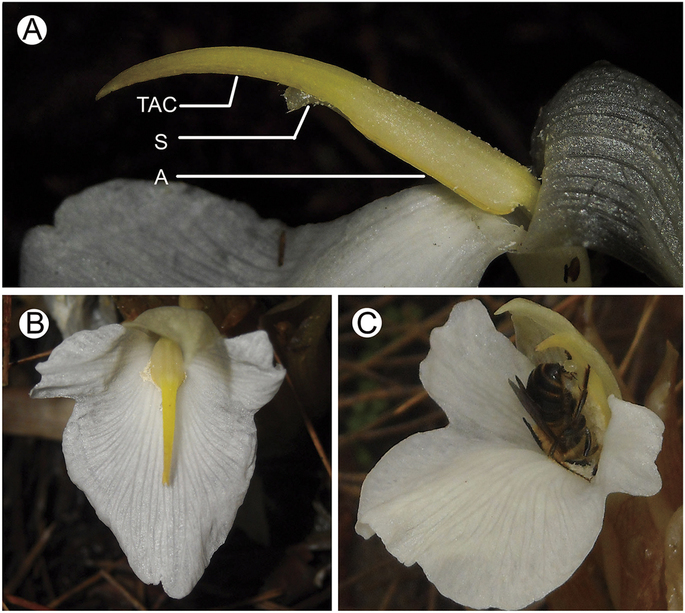
Flowers in more than 25 genera of ginger family (Zingiberaceae) have an innovative floral structure — anther crest, a specialized anther appendage which extends up from the top of the anther. However, it remains unclear why such a device is kept during natural selection.
Dr. FAN Yongli and his teacher Prof. LI Qingjun of Xishuangbanna Tropical Botanical Garden (XTBG) conducted a study to explore why flowers invest such considerable resource on the tail-like anther crest of a wild ginger (Zingiber densissimum), a perennial herb endemic to SW Yunnan.
The researchers tested several adaptive possibilities in sexual reproduction. They asked whether the tail-like anther crest functioned as a resource pool to promote seed development after fertilization of ovules. They then asked whether the tail-like anther crest was attractive to pollinators or had the function of manipulating pollinators’ foraging behaviors.
Afterwards, the researchers evaluated the contributions of the tail-like anther crest on the male and female fitness of plants respectively, and examined whether the functional role of the innovative floral structure in pollination process mathched its sexual role on resource allocation.
The researchers found that the tail-like anther crest TAC) had little function on pollinator attraction or on seed development, but played a key role on manipulating pollinator’s foraging behavior. It functioned as both male and female during pollination success of Zingiber densissimum, with female function even greater than male. Flowers without the TAC had significantly fewer pollen grains transported out during a single visit by pollinators, and produced fewer fruits and seeds than the intact flowers.
The study indicated that the TAC, a contrivance of the anther (male organ), functioned to manipulate pollinator’s behavior, thus enhancing both male and female functions.
The study entitled “Tail-like anther crest aids pollination by manipulating pollinator’s behavior in a wild ginger” has been published in Scientific Reports.

(A) The inner structure of

86-10-68597521 (day)
86-10-68597289 (night)

86-10-68511095 (day)
86-10-68512458 (night)

cas_en@cas.cn

52 Sanlihe Rd., Xicheng District,
Beijing, China (100864)

